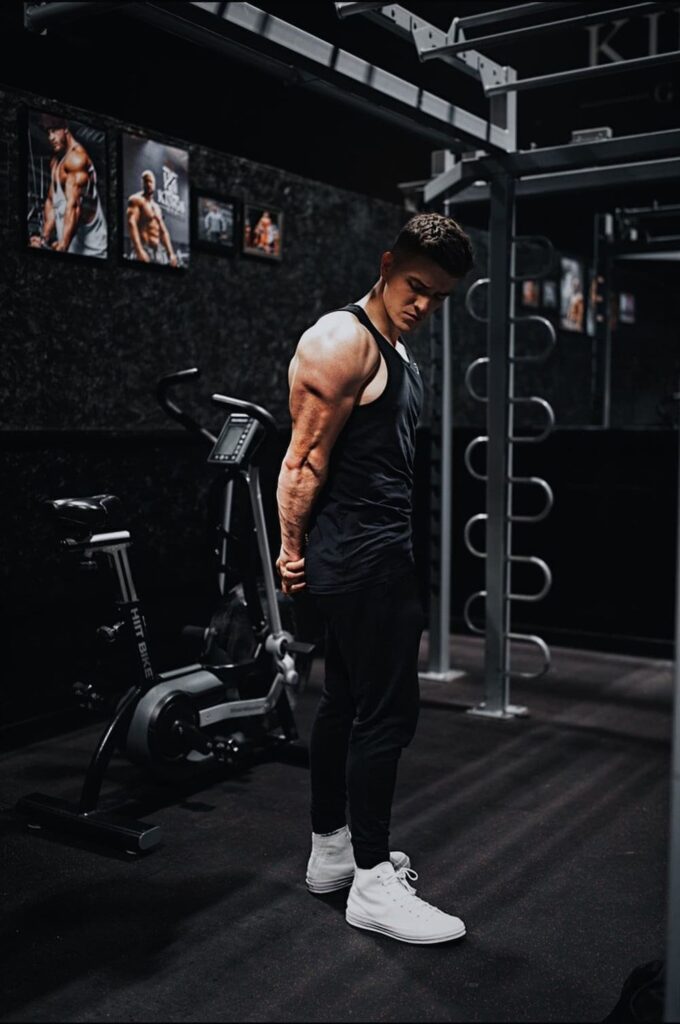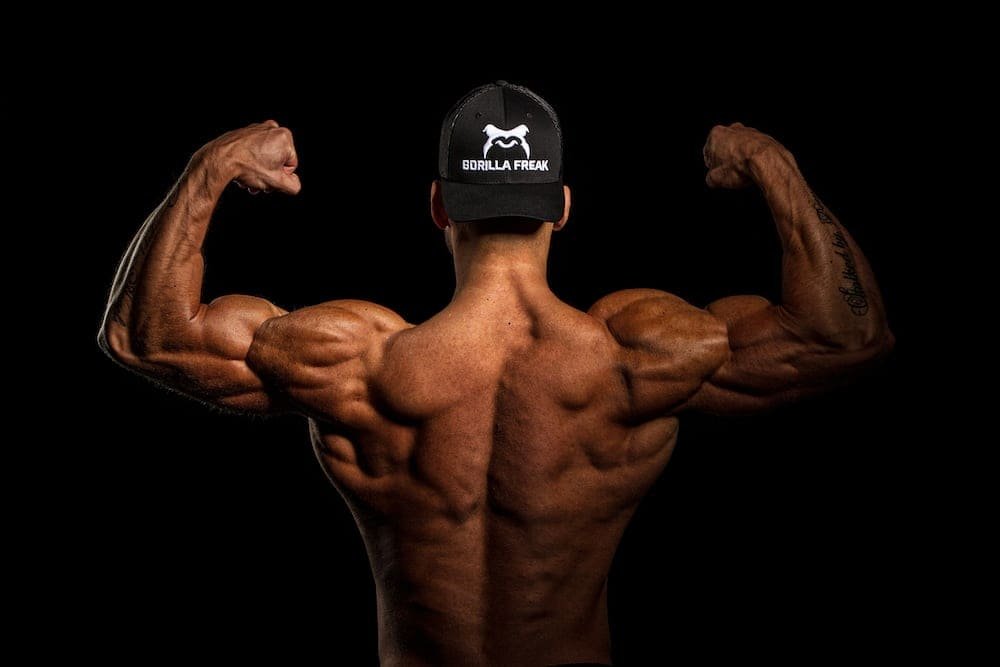Table of Contents
ToggleAll About Pull-ups
Pull-ups are one of the great body weight exercises which you can do for your upper body, specifically for back muscles. From average gym guys to athletes, everyone incorporates pull-ups in their training despite having numerous and versatile machines in the gym. Why? Because the amount of strength, muscle size, body awareness and control you gain is unbelievable.
By the end of this blog, the majority of your doubts will be cleared related to pull-ups. How? This blog will provide you the benefits of doing pull-ups, its correct technique, its commonly performed mistakes and a beginner guide as well for those who are struggling to reach their first pull-up or want to add more reps. Interesting, isn’t it? So, let’s start!
Benefits of Pull-ups
Why is it so that the pull-ups are the priority of any person who is a fitness freak, especially when it comes to building an enchanting back. Let’s find out!
1) Strength Gains
Throughout the pull-up movement, you are lifting approximately your total body weight, which is why so many beginners struggle in getting to their first pull-up as you need a massive amount of strength to do it.
2) Hypertrophy
Hypertrophy simply means ‘muscle gain’. As you are lifting such an amount of weight, automatically your muscles receive a massive amount of stimulus. And always remember “Greater stimulus=Hypertrophy”. Studies have also shown it is as effective as a lat-pulldown and even some variations of pull-ups are more effective than a lat-pulldown.
3) Grip Strength
A study showed that the PSI or the grip strength has dropped significantly in males from 116 at 1985 to 96 whereas it has increased in females from 79 to 98. Shocking, isn’t it? Pull-ups also work on your grip strength, the easier and longer you can hold onto the bar, the more pull-ups you may be able to do. Doing pull-ups increases the grip strength over time.
4) Athleticism
Pull-ups increase your body awareness in real sense as you have to stabilise your body throughout the movement unlike a lat-pulldown where your lower body is already stable. You learn how to control and handle your own body movement.
5) Weight Loss
Your back muscles are one of the greatest muscles of your body which is why you need a lot of energy to train the back muscles and hence you are burning more and more calories due to the sheer size of your back muscle.
Correct Technique of Pull-ups
As mentioned in many of the earlier published blogs like Push-ups: Benefits, Technique and Beginner Guide. Compromising with the quality of any exercise for the sake of increasing the quantity of the exercise does no good to your body. So it is very important to know the right technique before executing any exercise, let’s understand what’s the right mechanism of this one in just 3 steps:
STEP-1:-Grab the bar nicely and deeply with your hands and place them about a bit wider than shoulder-width distance. And get in a dead hang position which means just hang in a way so that your body is in a straight line and your shoulders are touching your ears(Scapula Elevation).
STEP-2:-This is the most important step as you have to stabilise and correctly position your body through which you will increase the force production capacity comparatively. To do this, Straighten your legs by keeping your toes pointed, tightening your quads and glutes, engage your core and most importantly engage your back muscles by pulling your shoulder blades/scapula down(Scapula Depression) and together(Scapula Retraction) which will automatically open up your chest.
STEP-3:-Once you have got the positioning right, you just have to start pulling yourself upwards while keeping the above mentioned posture intact and come back down nice and slow with proper body control. At the top of the pull-up position, your elbows will bend roughly around 45°-60°.
3 Most Common Mistakes
1. Grip Orientation
There are numerous grips for pull-ups like supinated(Underhand), pronated(Overhand), neutral, wide, etc. Following studies have occurred for pull-ups grip:
- In 2016, the Journal of Electromyography and Kinesiology did research comparing neutral, supinated(Chin-up) and wide pronated(Pull-up) and found negligible difference except more mid-trap activation in the wide version.
- In 2010, the Journal of Strength and Conditioning also compared different grips which were pronated(Pull-up), supinated(Chin-up) and rotational(Gymnastic rings) and found higher back activation in rotational one and bicep activation in supinated one.
So all in all, all types of grip hits the back effectively. But doing pull-ups with too wide grip is often what people love, thinking that hits the back most effectively as they are able to see their scapula coming out more but in reality its totally opposite because it limits the arm extension and adduction which is most important when training the lats and is also risky for your shoulder joints and wrists.
2. Disturbing Body Movement
People often try to kip(Use body momentum), not pull in a straight line up and down, cut down their ROM(Range of Motion) and tilt their body which disturbs the body movement.
3. Loosing Body Tension
Many people try to disengage specific parts of their body(Mentioned in the correct technique section) which leads to lesser force production.The most common mistakes are crossing the legs while doing pull-ups. The weight of your legs is the weight of your legs no matter how you place them.
But keeping them in a straight and tight position helps to generate more force as you are not losing the tension of your body, even at the bottom of the rep. The second mistake, is shrugging your shoulders or not engaging your scapula which makes the movement easier and less effective as well due to shift in focus.
Progressions of Pull-ups: Beginner Guide to Pull-ups
As a beginner, people often try to jump directly into performing pull-ups which do more bad than good. So through these simple steps you will be able to get to your first pull-up and add on more reps over time.
Points to Remember:(1) Be patient, diligent and consistent throughout your pull-up journey. People often try to just go through the process and skip the steps quickly. Not giving enough time to your body to adapt to each step of the process will prevent your muscles, joints and bones from getting stronger for the upcoming steps.
In a nutshell, “SKIPPING THE PROCESS MAKES IT LONGER RATHER THAN SHORTER.”
(2) Start with any progression in which you feel comfortable which means you are at least able to do 5 reps of that particular progression.
(3) Once you are able to do around 15-20 reps effortlessly or at maximum 30 reps, progress onto the next one. When it comes to the time limit, a decent time limit will be around 1 minute or at maximum 3-5 minutes.
This guide will have 2 phases:(i) Grip Strength/Scapula Conditioning and (ii) Movement Learning. So let’s hope onto the work!
Phase-1:- Grip Strength/Scapula Conditioning Phase
Step-1:- Dead Hang
This step is purely for beginners who do not even have the basic strength to pull their own body weight and it will build up your foundational strength which is needed to perform much advanced skills.
You just have to hang on the bar by keeping your whole body straight and engaged(Straighten and tighten your legs, toes, glutes, core and hands) and keep your shoulder blades disengaged(Scapula Elevation), so that your shoulders touch your ears. Do it for as long as possible.
Step-2:- Active Hang
Once you have reached a certain amount of time limit mentioned in (3)Points to Remember, you can come to this step. You just have to do the same dead hang position but this time you have to engage your back by pulling your shoulder blades/scapula down (Scapula Depression) and back (Scapula Retraction) which will automatically open up your chest.
Step-3:- Scapula Pull-ups
This step will be the game changer in your pull-up journey because it works significantly on your grip strength as well as scapula strength which is extremely important in doing any variation of pull-up.
Simply you have to get from a dead hang position to an active hang position on and off, which means from dead hang position start pulling your scapula down and back and again get back to the initial position slowly, in a properly controlled manner.
Phase-2:- Movement Learning Phase
Step-1:- Australian Pull-ups/Body Rows
This type of pull-up is perfect for beginners as it introduces your body to the pulling movement. All you need is a bar/rod which is parallel to the ground and is more or less of your hip level height. Grab onto the bar and place your body in between and parallel to the bar and ground. Bend your knees at 90°(Perpendicular to the ground) for support. The bar should be exactly above your lower line of chest and your scapulas should be protracted and depressed.
Initiate the movement by retracting your scapulas gradually and pulling yourself up by bending your elbows and coming back down slowly.
Step-2:- Negative/Eccentric Pull-ups OR Band Assisted Pull-ups
(i) In negative/eccentric pullup, you just have to perform the negative phase of the pull-up which is to come down as slow as possible(Ideally 3-5 seconds) from the top position of the pull-up to the bottom. Doing the negative/eccentric portion of any exercise builds strength in return of doing its concentric phase as well over time.
(ii) The negative pull-up is extremely exhaustive as you are only performing the negative part which is scientifically proven to be more muscle fatiguing, so an alternative to it is, band assisted pull-up, you just have to perform the pull-up but with the assistance of the resistance band. The force exertion at your end decreases depending upon the thickness of the band you are using.
Step-3:- Pull-ups
Finally you have reached your goal to perform your first pull-up. By the time you will reach this step, you have built enough strength to do a couple of reps.
How much time does it take to learn the Pull-up?
No one can give you the accurate answer except your patience, tenacity and diligence to learn the pull-up. But still, on an average it takes a few months to learn it, but you can take longer than this due to various factors involved like body weight, medical condition, training experience, etc. So do not compare yourself with anyone, results vary as people vary.
How to structure your pull-up workout?
Having so many steps must be confusing for an individual to incorporate in his/her training. Let me help you out! This is an example of how one should structure his/her training routine-
Take an exercise from Phase-1 depending upon your level and then an exercise from Phase-2 as well in which you can at least do 5-8 reps in 3-4 sets each. So your workout will look like this:
(i) Dead Hang 3-4 sets × 5-8 reps [Phase-1]
(ii) Australian Pull-ups 3-4 sets × 5-8 reps [Phase-2]
[NOTE:-(1) You can take rest between sets from 1-3 minutes or even more if your performance level in the next set is massively decreasing.
(2) If you are not left with sufficient energy to do the Phase-2 exercise, its OK. Just do the Phase-1 properly. Over time you will be able to do the Phase-2 as well.
(3) Train 2-3 times a week.]
Takeaway
Pull-ups are a game changer when it comes to building your overall back, strength and muscle size. Doing them needs a lot of strength and hence builds a massive amount of strength in return. Less equipment needed, highly effective and worthy in all senses. So what are you waiting for to start your pull-ups journey today!






















Your blogs are really very nice and helpful
Thanks
Informative blog
Thanks
Your information is really productive.
Thanks